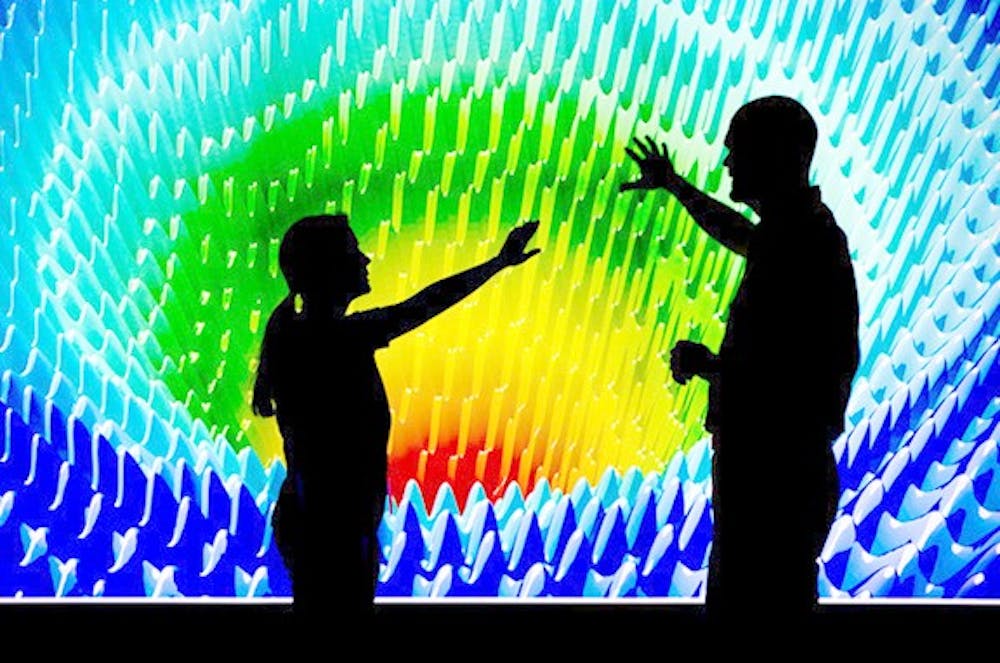UB has decided to plan an attack on some of the largest problems that are facing mankind and the globe, according to Provost Charles Zukoski.
Through Communities of Excellence, UB plans to approach problems like access to quality food and medicine in under-resourced communities with innovations directly from UB faculty and $25 million over the next five years. The initiative, which UB announced back in May, started over a year ago and is made up of faculty, staff and students from different schools at UB. These communities have educational and research components while engaging with the world outside of UB.
“We will educate a lot of individuals who will engage the communities in active ways,” Zukoski said. “There will be recognizable reasons to come to UB to be educated, to work or to gain more knowledge.”
The four communities are based at UB but will expand their impact to cut across the globe and include Global Health Equality, Sustainable Manufacturing and Advanced Robotic Technologies (SMART), the Genome, the Environment and the Microbiome (GEM) and Research and Education in eNergy, Environment and Water (RENEW).
RENEW was the precursor to the project – a big effort in energy water and the environment that started over a year ago. RENEW brought about the idea of finding other groups to make a larger project.
RENEW, plus the other three communities that were chosen, will be given $25 million that will be spent over a span of five years. The money comes from university resources, state funds, UB Foundation funds and a combination of all other revenues coming into to UB.
As the first step to the project, Zukoski received 100 concepts from faculty that identified big global issues. They were then collapsed down to 16 proposals and then to six by a panel of faculty. The six full proposals were more detailed written documents and three were chosen.
Joseph Gardella, a SUNY distinguished professor of chemistry, was one of the reviewers on the panel when examining the final proposals. He had to recuse his review of GEM because he is an active member of the educational component of the community.
Gardella’s job was to provide input to Zukoski on each of the groups but he did not make a recommendation on the final decision. He simply talked about the weaknesses and strengths of each proposal, he said.
“The ones that were chosen will have extraordinary impact,” Gardella said. “The advanced manufacturing is extremely important, not only at UB but in the outside world to prepare people for 21st century manufacturing jobs.”
Global Health Equity
Global Health Equity has taken on the challenge of helping the economic, environmental and social conditions in regions with healthcare disparities.
Zukoski said the most intriguing part about the concept is that it brings together different disciplines, such as engineering, architecture and arts and sciences to address healthcare outcomes.
Some of Global Health Equity’s focuses are sanitation for women, access to high-quality food and getting drugs to under-resourced communities.
“They are choosing an interesting niche in global health that is based on the use of the built-in environment and engineering solutions to lead to less inequitable outcomes,” Zukoski said.
SMART
SMARTis the second group brought together from the School of Architecture and Planning, School of Engineering and Applied Sciences and School of Management. This group addresses how to sustainably manufacture products people use and how to use robots in that process.
SMART has also developed an educational program where students can get experience and knowledge on how to be entrepreneurial and how to use and design robots, Zukoski said.
SMART works closely with Buffalo Manufacturing Works (BMW), a cooperation based in downtown Buffalo, supported by the state and small industries in order to develop the advance manufacturing economy in Western New York.
GEM
The Genome, the Environment and the Microbiome (GEM) focuses on the DNA humans carry and the microbiome bacteria living in and on everyone.
“This group is important in the healthcare space, how to keep people healthy and how diseases are transmitted,” Zukoski said.
GEM plans to educate people about how genetics impact humans and how the environment affects health.
GEM not only focuses on science-based problems but also incorporates educational plans for different professions and also grades schools. GEM has created programs directed to different groups of people they feel that must have knowledge of new science and technology.
Going forward
There is no set date for when the projects will be in full effect but the plan is to develop the communities for long-term.
As of now, Zukoski said the approach UB is taking is very unique.
While other schools have research centers that are focused on scholarships, UB has asked its communities to touch all of the universities’’ missions. This means the communities are expected to incorporate the public and all educational programs, whether it’s undergraduate, graduate or kindergarten through 12th grade.
“This is really cool,” Zukoski said. “We’re bringing together, in new ways, all of the aspects that make UB strong.”
Gabriela Julia is the senior news editor and can be reached at gabriela.julia@ubspectrum.com





